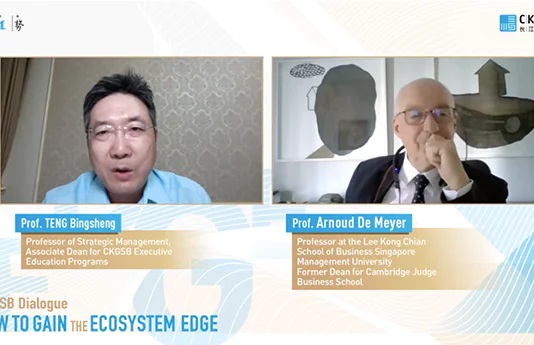In today’s rapidly evolving business landscape, integrating high-potential start-ups into an existing business portfolio has emerged as a crucial strategy for achieving long-term growth, especially in dynamic sectors like pharmaceuticals and technology. An analysis by the Federal Trade Commission (FTC) reveals that between 2010 and 2019, the leading five technology firms in the United States—Amazon, Apple, Microsoft, Alphabet, and Facebook (now known as Meta)—collectively completed 616 acquisitions of start-ups.
Similarly, Chinese giants such as Baidu, Alibaba, Tencent, and ByteDance have adopted a comparable approach to expansion, with Tencent notably executing seven acquisitions in 2022, predominantly targeting start-ups and small enterprises.
However, the path of acquisitions is not without its challenges. While some start-ups thrive post-acquisition, others may struggle to maintain their originality or become fully integrated into the acquiring company’s operational framework, potentially leading to a loss of independence. Furthermore, cultural mismatches and internal discord can precipitate high turnover rates and disrupt the acquired company’s founding mission.
This article aims to equip small business owners and start-up founders with the knowledge to navigate the complexities of acquisitions effectively. By dissecting the acquisition of a domestic printing supplies company (“Company A”) by a publicly traded printing giant (“Company B”), we will highlight the essential factors and strategic decisions that contributed to a seamless integration and subsequent growth following the acquisition.
The Rise and Expansion of Company A
Nestled in the Xiangzhou District of Zhuhai, Company A began its journey in 2005, and has since undergone four distinct phases of growth that have defined its trajectory. The company’s early years (2005-2008) were characterized by a surge in export trade entrepreneurship, laying the foundation for its global outreach. This initial phase was succeeded by a period of significant industrial expansion, marked by the establishment of a factory from 2009 to 2012. The subsequent years (2013-2016) witnessed the broadening of wholesale channels, paving the way for the final phase of online retail diversification and brand elevation starting in 2017.
Initially, the team was composed of just three members: the founder and two foreign trade salesmen, along with a clerk who was tasked with handling both logistics and administrative duties. The company primarily focused on the export of general printing consumables. With the internet era gaining momentum, Company A astutely harnessed the potential of burgeoning digital platforms in China, including Alibaba, Made-in-China.com, and Global Sources. This strategic move enabled Company A to penetrate international markets, establish online storefronts, and forge lasting partnerships with overseas importers.
The landscape shifted dramatically by 2008 as escalating order volumes and the pressing need for innovative product development and faster delivery exposed the limitations of relying solely on outsourced manufacturing. Fierce competition eroded profit margins and compromised the quality of products from external manufacturers, signalling a pivotal moment for Company A. The imperative became clear: to maintain its commitment to quality and delivery efficiency, the company had to take control of its manufacturing processes.
Between 2009 and 2012, Company A undertook strategic acquisitions of similar entities, significantly enhancing its production capabilities and moving manufacturing in-house. This upstream integration led to the establishment of a new manufacturing arm, further solidifying Company A’s standing as a leading force within the industry.
Strategic Moves Amidst Industry Challenges
In the face of intensifying competition within the printing consumables sector, the industry witnessed the emergence of product homogenization, sparking fierce price competition and challenges in dealings with large-scale importers and wholesalers. Thus, in 2013, Company A embarked on an “outward strategy” aimed at penetrating key international markets, including Japan, the United States, Germany, and Spain. The strategy focused on establishing sales offices and warehouses in these regions to directly engage with local, smaller-scale retailers, circumventing the dominant importers and wholesalers.
Despite these efforts, several obstacles—limited resources, insufficient experience in international markets, low brand visibility, and competition from established global players—hampered the success of Company A’s overseas ventures. This led to the discontinuation of its foreign operations within two years, marking a significant setback in its expansion efforts.
By 2015, despite its ink cartridges being among the top three in China, Company A faced a critical juncture without having secured a leadership position in the market. It grappled with deficiencies in intellectual property rights, brand recognition, and technological innovation. After careful consideration, the leadership and stakeholders of Company A decided to engage in a merger and acquisition (M&A) with a leading entity in the printing industry, Company B, as a strategic move to overcome these hurdles. To facilitate this transition, Company A underwent a comprehensive restructuring, merging its operations into a newly established holding company.
The Strategic Acquisition by Company B
Company B, a prominent figure in the printing sector, is listed on China’s A-share market and has a history of innovation and expansion since its inception in 2000. Specializing initially in compatible ink cartridges, the company diversified into the development of printing consumable chips, compatible toner cartridges, and printers, driven by robust research and development efforts. Following a successful initial public offering (IPO) on the Shenzhen Stock Exchange in 2015 through a reverse takeover, Company B embarked on a series of strategic acquisitions to bolster its market position and technological capabilities.
This acquisition spree included a notable American printing consumables manufacturer in June 2015 and a semiconductor company based in Hangzhou in October 2015. In 2016, Company B made a significant investment in acquiring a prestigious US laser printer brand, enabling it to expand its global footprint to over 150 countries and regions and cover the entire printing industry chain, from hardware to consumables to integrated circuits.
The partnership between Company B and Company A dates back to 2012 when they collaborated on market and supply chain strategies. By 2015, both companies recognized the mutual benefits of a stronger alliance. Company A sought to leverage the acquisition to address its challenges and growth barriers, while Company B aimed to consolidate its market position by acquiring two of the largest players in China’s compatible ink cartridge market and expanding its customer base for its upstream chip business.
Decision Time: Choosing Between Competing Offers
In the wake of productive negotiations, both parties formalized their intent for collaboration by signing a framework contract in 2015, setting the stage for what promised to be a mutually beneficial partnership.
However, at this pivotal juncture, Company A was approached with a proposition from “Company C,” a supplier of drum cores essential for their toner cartridges. Despite this unexpected offer, Company A ultimately decided to forge a partnership with Company B. In-depth discussions with the founder of Company B shed light on the factors that tipped the scales in favor of this decision.
First and foremost, Company B showcased a deep resonance with the core values held by Company A. While the founder of Company C brought to the table a robust technical expertise, their vision for collaboration starkly contrasted with the ethos foundational to Company A. On the other hand, the leadership at Company B was not only adept at fostering a culture of teamwork but also embraced a vision that went beyond financial gains. This vision aligned more closely with Company A’s commitment to broader goals and principles.
Furthermore, it was paramount for Company A to ally with a partner whose ambitions for growth and personal development mirrored its own aspirations, especially in the aftermath of the acquisition. Company B expressed an ambition to establish itself as a global leader in the printing industry and was dedicated to empowering its newly acquired partners to contribute to this goal. This commitment made Company B an ideal strategic fit for Company A.
In contrast, negotiations with Company C brought to light a fundamentally different set of priorities. Company C’s interest seemed to be primarily in leveraging the scale and cost advantages of Company A’s manufacturing resources for its own benefit. This perspective showcased a stark deviation from Company A’s strategic goals and values.
Company B, with its considerable market share and extensive scale, approached the acquisition with a notable gap in its business strategy—the absence of a strong presence in the mid-to-low-end market. This is where Company A, with its remarkable cost management and efficient operational methodologies, excelled and thereby provided valuable insights to Company B.
Meanwhile, Company B’s advanced chip patent technology and intellectual property portfolio, combined with its streamlined supply chain operations, presented a formidable competitive advantage. It is particularly significant that Company B’s proprietary ink carriage chip technology accounted for a substantial portion—50-60%—of Company A’s production expenses at the time, emphasizing the strategic value of the acquisition.
It was paramount for Company A to ally with a partner whose ambitions for growth and personal development mirrored its own aspirations, especially in the aftermath of the acquisition.
Company C, while serving as a supplier to Company A, primarily provided drum cores for toner cartridges—a product line not central to Company A’s core offerings. Over time, the cost of these components dwindled, ultimately representing a mere fraction—less than 2%—of Company A’s procurement expenses, diminishing the strategic impact of Company C on Company A’s financial architecture.
Integrating Company A into Company B
Upon thorough analysis, Company A decisively selected Company B as its strategic partner. In a significant move in March 2017, Company B secured a majority stake in Company A, acquiring 51% of its shares along with shares of two other companies positioned second to fourth in the generic printing supply market, for a total outlay of 556 million yuan in cash.
In the subsequent period following the acquisition, Company B endorsed a liberal governance approach, allowing Company A to maintain operational independence while implementing overarching performance objectives. This strategic approach facilitated a seamless integration, with daily operations remaining self-governing.
Company B took a measured approach in consolidating control, appointing a financial director to Company A only in April 2020, two years post-acquisition. The acquisition process concluded with Company B obtaining the remaining 49% of Company A’s shares, formalized through an amendment to the share issuance agreement.
Reflecting on the Acquisition’s Benefits
Reflecting on the period since 2017, it is evident that Company A, along with its founder, has significantly benefited from the acquisition by Company B. From the outset, Company A preserved its autonomous developmental agility within the framework of Company B, while aligning with the latter’s broad strategic vision. This strategic autonomy allowed Company A’s management team to receive distinct strategic guidance without compromising their flexibility in decision-making.
A notable shift in strategy saw Company A enhancing its branding and e-commerce initiatives, with an emphasis on the mid-to-low-end market segment, thereby solidifying its domestic e-commerce presence. Notably, the founder’s expertise in cross-border e-commerce was instrumental in propelling Company B’s efforts in this domain. In addition, the integration into Company B’s ecosystem brought tangible advantages to Company A, including financial backing, supply chain optimization, and strengthened ties with labor markets and government entities.
Furthermore, the merger unveiled a plethora of developmental avenues for Company B’s team. With Company B experiencing a deficit in operational talent amidst its rapid growth, the skilled team from Company A filled this vital niche. Operational talent, characterized by strategic insight and leadership acumen, found new opportunities to excel and innovate within the larger conglomerate structure. In addition, Company B’s managerial talent, adept in optimizing efficiencies and directing routine processes, benefited from the fresh perspectives brought by Company A’s team.
Post-merger, the enrichment of roles was marked by the assignment of significant new responsibilities to the founder of Company A, who leveraged his cross-border e-commerce acumen in a dual capacity—maintaining his original role and leading a new cross-border e-commerce venture within Company B. Moreover, senior executives and staff from Company A were afforded the opportunity to undertake expanded roles at the group level, enhancing their professional trajectories and personal growth.
The Pillars of M&A Success
Company A’s successful integration into Company B exemplifies the importance of strategic alignment, yielding benefits including business growth, founder enrichment, and economic prosperity. Yet, the realm of mergers and acquisitions (M&A) is replete with stories of failures—larger entities engulfing smaller ones, the dimming of entrepreneurial spirit post-merger, and founders’ disenchantment with complex earn-out provisions.
For small businesses at the juncture of pivotal decisions, the judicious selection of a merger partner is paramount. Academic inquiry and industry analyses underscore that the outcome of strategic alliances hinges on four fundamental factors:
1. Trust: In strategic alliances, trust between partners is a key factor that helps reduce uncertainty and mitigate the threat of opportunism.
2. Commitment: Commitment in strategic alliances is defined as tangible inputs or contributions that prevent partners from acting in ways that could harm the alliance, thereby increasing the likelihood of its success.
3. Complementarity: The complementarity between partners (for instance, the degree of similarity and fit) influences the effectiveness of the relationship.
4. Financial Returns: The degree to which partners can enhance the financial value and provide strategic advantages to the alliance also increases their attractiveness in the selection process.
Exploratory and Exploitative Alliances
Exploratory alliances are characterized by their quest to discover new opportunities, resources, markets, products, and technologies, forging paths of innovation through collaboration. Conversely, exploitative alliances are pragmatic, focusing on enhancing revenue or reducing costs by strategically leveraging a partner’s assets and capabilities. While exploratory alliances can lead to ground-breaking innovations, they inherently carry greater risks due to their uncertain nature and the complexities involved in contract governance.
This precariousness often leads small businesses to be wary of exploratory alliances with larger corporations, which command greater bargaining power and could potentially dominate the partnership. Exploitative alliances, by contrast, promise more controlled and reliable outcomes, making them a more pragmatic option for smaller entities.
Mitigating Risks in Strategic Alliances
For small firms, mitigating the inherent risks of exploratory alliances involves the adoption of both formal and relational governance frameworks. Formal governance delineates the legal aspects of the partnership, establishing clear rights and obligations, while relational governance operates on the principles of trust and mutual understanding, often beyond the scope of legal contracts.
The Role of Relational Governance:
Relational governance can be a bulwark against the encroachment risks posed by larger entities. It is particularly effective in exploratory alliances, where property rights and profit-sharing may be fluid, and thus, disputes are more amicably settled through relational norms rather than aggressive negotiations. By fostering an environment of mutual respect and understanding, relational governance can enhance the efficiency, adaptability, and cost-effectiveness of alliances, empowering small businesses to explore their full potential in collaboration with larger firms.
Equity Governance in Alliance Structures:
Equity governance structures offer a distinct advantage for exploratory alliances by providing a degree of control that is not typically available in contractual management alone. These structures are instrumental in protecting the interests of smaller businesses amidst the ambiguities and uncertainties that often accompany exploratory alliances, particularly concerning intellectual property and other key assets. Equity-based governance is therefore seen as a strategic asset for smaller firms engaged in exploratory ventures with larger partners. However, in exploitative alliances, where the need for intensive coordination is less, non-equity governance models are often more suitable due to their inherent flexibility.
In the case study above, the post-merger dynamics between Company A and Company B resembled an exploitative alliance more than an exploratory one, providing a safeguard for Company A and allowing it to thrive within the larger entity’s ecosystem. The founder’s minority stake in Company B did not culminate in a traditional equity joint venture but rather established a governance model rooted in shared values and reciprocal trust, aligning with the characteristics of an exploitative alliance.
Key Takeaways for Navigating M&A
As small companies navigate the complex waters of forming alliances, it is imperative to weigh the potential benefits against possible risks. Strategic foresight, meticulous planning, and cooperative synergy are essential to harness the full advantages of such partnerships.
Ultimately, when small businesses contemplate alliances with larger firms, they should meticulously assess the alignment of core values, goal compatibility, trust levels, and the complementary nature of the entities involved. The type of alliance—exploratory or exploitative—has significant implications, and the choice of governance structure, whether formal or relational, plays a crucial role in risk mitigation.
Embarking on the journey to become a market standout, often termed ‘becoming a unicorn,’ does not necessarily require going it alone. Strategic alliances with established firms can be a powerful catalyst for growth. This journey, however, demands of small businesses and start-ups a combination of steadfast resolve and astute decision-making. Aligning with a larger entity is a strategic move that, when executed with insight and determination, can lead to a mutually prosperous future.
About the Authors
Weilei (Stone) Shi is Professor of Managerial Practice at the Cheung Kong Graduate School of Business (CKGSB). Dr. Shi graduated from Katz School of Business, University of Pittsburgh with his Ph.D. in Strategic Management in 2008. Currently, he is an Associate Editor at the Journal of Management Studies. He is also a distinguished researcher at Shanghai Institute for Global City—Shanghai Municipal Government Decision Committee. Before joining CKGSB, Dr. Shi was a tenured Professor of Strategy and Doctoral Advisor at Zicklin School of Business, Baruch College-CUNY, and worked for Roland Berger Strategy Consultancy in its Shanghai (Great China) office before entering academia. He also acts as independent directors for a few listed companies in China.
Bingsheng Teng is Professor of Strategic Management and Associate Dean for Strategic Research at CKGSB. He formerly served as a tenured Professor of Strategic Management at George Washington University (GWU), where he was a doctoral advisor and lead professor of the departmental doctoral program. Dr. Teng has published over 20 articles in academic journals including Academy of Management Review and Organization Science. His research is included in most textbooks on strategic management. An authority on strategic alliances, he has been interviewed by media such as The Wall Street Journal and The Washington Post. Dr. Teng has served as an independent board member for nearly ten listed companies, including industry leaders such as ZTE and Wanda.






















